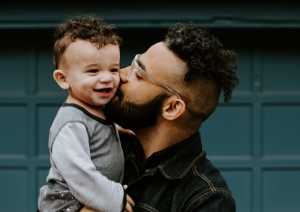Whilst the pandemic shook the foundations of family life we’ve seen some positive behaviour changes, with evidence that families intend to maintain them. This is down to many changes being rooted pre-Covid-19.
Families were looking for a moment to slow down.
Families have always craved more ‘together time’ and dreamt of being able to slow down, but the business of the everyday never allowed families to address this. They were too busy “being run ragged with parties, clubs and activities”.
From the fundamental anchor of school to the peripheral distractions of social life around it, dance classes and football training, to playdates and parties. On the 23rd March 2020, they all stopped.
On top of children’s lives being disrupted, many parents were working from home or had been furloughed, forcing a collision of lives and a somewhat deconstructed family unit running at a frantic pace in different directions; emotionally and physically forced together.
This enforced pause enabled families to enjoy time together. Out of this enforced togetherness, families were able to make more enjoyable connections. They found ways to better themselves and grow, adopting better habits which they intend to keep.
Whilst it is important to assert that lockdown wasn’t a blissful utopia, research conducted by Wavemaker UK and News UK found that 56% of families felt closer during the pandemic and 76% said they enjoyed spending more time with their family. Whilst families were overarchingly desperate for holidays and events to return, families did not want to disregard the changes that had happened.
Ikea Home research found 44% wanted to continue to spend more time with their families after lockdown, and YouGov data found families were 33% more likely than the average adult to say they would miss elements of lockdown. In years to come, who knows, we might even be nostalgic for elements of it.
Families are growing and bettering themselves, together
"We do more activity together, so most meal times, morning yoga. Less solitudinal activities."
News UK Research
Exercising together - Sport England research found +4.3% increase in going for a walk amongst children, and an extra 1.2 million people cycled for leisure in 2020. In focus groups, families told us that they were coming together to exercise for health but also for fun.
Eating together - More families were coming together for mealtime and cooking from scratch. This growth was so prominent, Morrison’s launched a Family Cooking box in July 2020 after research demonstrated a growth in scratch cooking amongst families. During lockdown families spent an extra 33 minutes every day eating together, and 98% more time every day preparing food together.
Around a new pet - The lockdown pet proved a driver of together time, and of those that purchased their first pet during lockdown 56% had children at home.
Learning new skills to boost connection - One app that saw a surge in demand during lockdown was Duolingo (a language learning app), and this wasn’t just used to fill the time. A report from Duolingo found there was an 83% increase in people listing culture and family as a motivation for learning a language in 2020 versus 2019. People took the chance to be able to better their connection with their family and culture.
Deepening relationships
"We spend more time together. We are nicer to each other. We eat family meals together. We talk to each other, find out about each other’s days."
News UK Research
Walking became a way for one Mum to connect with her teenage son and have hard conversations. In the focus groups, several Mums talked to us about how the walk allowed the chance to talk and get to know each other better. One Mum told us how she and her older son would have time walking along together to connect. The time together allowed for family members to feel more empathetic to each other.
Positive feedback loops
Simple pleasures of being outside and exercising whilst exploring the local community created further awareness of the impact of the environment and local community, and the role it can play on health. Wavemaker UK research found one Mum who noticed the positive impact lockdown had on her asthma as cars were on the road less. This made her consider walking more, discovering local places of sanctuary. The better the behaviour the better families felt, and the more this became a habit.
The desire to keep these good behaviours
Lockdown life has given families time to enjoy simple pleasures which make them feel good and they are keen to maintain them.
Sport England found that 62% of people intended to keep walking and cycling more post lockdown. Our research found families planned to continue to walk, cook and bake.
Whilst step change has occurred, as lockdown eases and diaries become more jam packed families may find themselves falling into old routines.
Organisations and brands have huge opportunity to help families keep up these good intentions
1. Keep family time
Families may have started doing things for betterment, making positive behaviour changes that impacted health and the environment, but it’s important to note the driver for this behaviour was spending time together as a family. Brands need to be aware of this and focus on families being together as the motivator to get families to act, whether that be through exercise, cooking or baking.
A piece of education may provide a trigger, but positioning doing good around together time provides an emotional reason to continue. For example, a food brand could create recipes that are designed to be cooked together.
2. Find or create growth nudges
Keep it small and manageable. The behaviours that stuck throughout lockdown were the ones that were easy, whether that be spending 40 minutes walking, or playing a board game on a Sunday moment.
As one Mum told us “the big gestures don’t last – they soon get forgotten”. Instead, families were focussing on implementing small changes as the world returned to normal, such as cancelling individual Sunday morning swim lessons for a group swim or committing to always walking to school instead of getting back on the bus. Changes that would have a positive impact on their mental and physical health and the environment.
Focus on little nudges that can make a cumulative difference in the long term and keep healthy habits going. One idea for brands is to steal with pride Duolingo’s approach of creating a character, such as their owl that sends a nudge every day to continue with an activity
3. Use technology
Supply and demand for collective family experiences through technology were on the rise pre-pandemic. The lockdowns have simply ensured this need is set to stay. In speaking to families, we heard how one Mum and her son’s lockdown purchase of a Nintendo Switch kept the family dancing together. Dancing for no reason also increased in Sport England’s research. Another scenario was a family using their Fitbits’ to track steps and monitor who was winning (or losing), keeping them all engaged and entertained.
This correlates with data from The Insights People who found that adoption of fitness watches had increased amongst children. They predicted that as normality returns “wellbeing, self-care and improving mental health could well become a daily focus for families”.
Brands should look at how tech and fun can be combined to promote positive behaviour changes, and how they can use technology to create focus on wellbeing habits. Radical partnerships between technology providers and brands provide a brilliant opportunity to bring this to life.
The Covid-19 outbreak, whilst catastrophic, created a moment of serendipity for families who realised that increased family time can invertedly lead to better habits and stronger units. These circumstances provide the opportunity for brands to support families to rekindle these betterment icons as the world returns to normal.
Full freedom is in touching distance now, and as time passes brands have the opportunity to rekindle nostalgic icons such as the daily walk and the family lunch, and utilise them to help families. It is imperative that the usual rules of behaviour change are applied, and that small nudges are combined with fun and together time to ensure the most impact.









